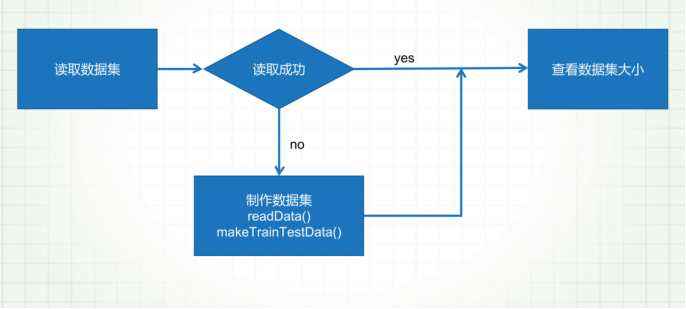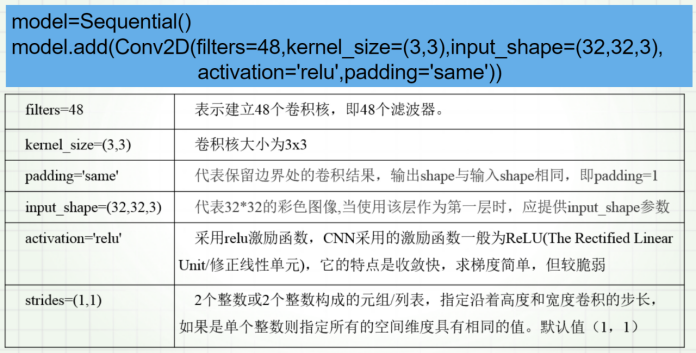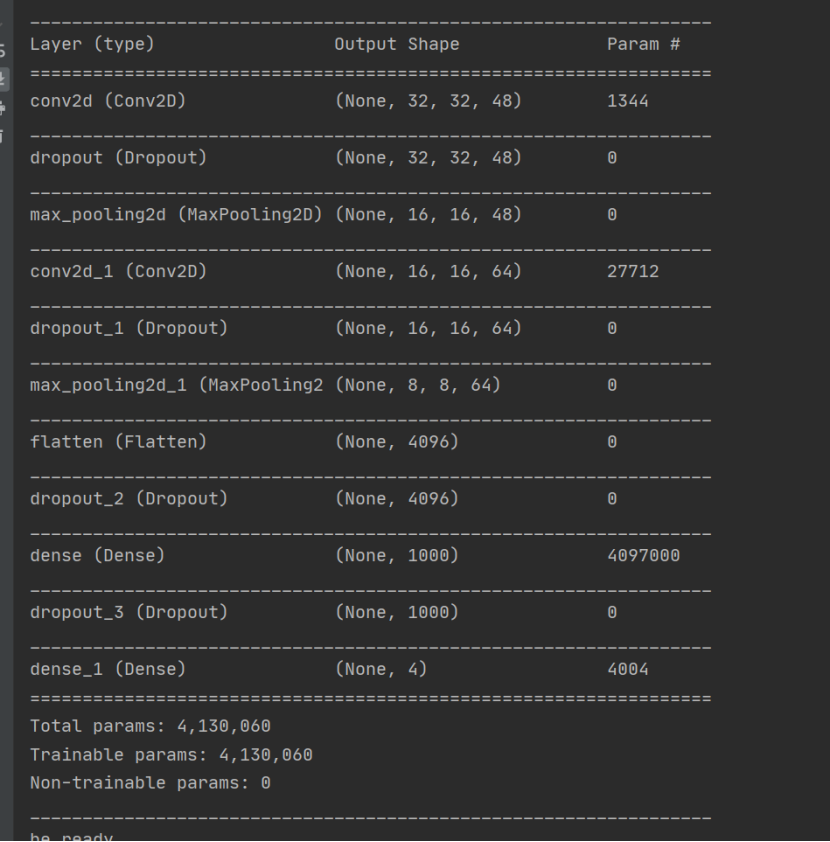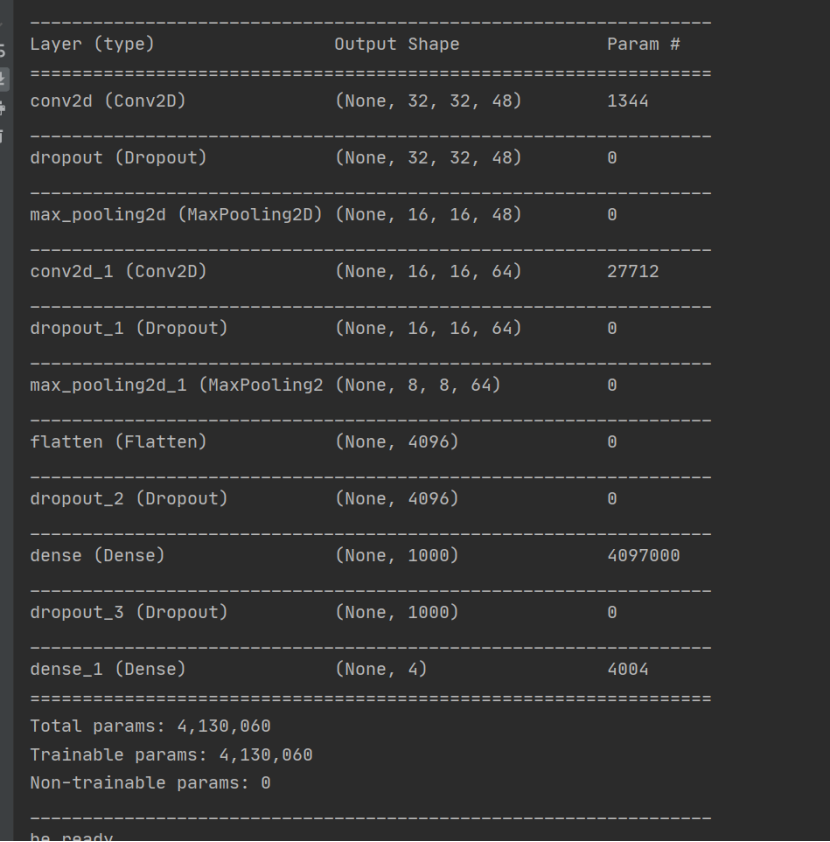机器学习—— 垃圾分类
垃圾分类
一、选题背景
现在随着人口数量的增多,产生了越来越多的垃圾。为了保护好我们居住的环境,我们应该学会垃圾分类,尽到垃圾分类的义务,做一名合格的公民。垃圾分类可以减少对环境的污染,还可以减少垃圾的占地面积,同时可以将回收的垃圾进行二次利用。减少垃圾产量之后不仅可以美化城市环境,而且还能对某些有价值的垃圾进行回收,能够减少资源的浪费,还可以减少二氧化碳的排放量。
二、机器学习案例设计方案
- 本次项目所用的数据集是从kaggo平台下载的,在dataset文件下有四个类别文件,是四个大类的垃圾分类的名称
数据集分为:训练图像集、训练标签集、测试图像集、测试标签集、
2.本次采用的深度学习的框架是 Tensorflow
Tensorflow的简介:TensorFlow™是一个基于数据流编程(dataflow programming)的符号数学系统,被广泛应用于各类机器学习(machine learning)算法的编程实现,其前身是谷歌的神经网络算法库DistBelief [1] 。
Tensorflow拥有多层级结构,可部署于各类服务器、PC终端和网页并支持GPU和TPU高性能数值计算,被广泛应用于谷歌内部的产品开发和各领域的科学研究 [1-2] 。
TensorFlow由谷歌人工智能团队谷歌大脑(Google Brain)开发和维护,拥有包括TensorFlow Hub、TensorFlow Lite、TensorFlow Research Cloud在内的多个项目以及各类应用程序接口(Application Programming Interface, API) [2] 。自2015年11月9日起,TensorFlow依据阿帕奇授权协议(Apache 2.0 open source license)开放源代码 [2] 。
Keras是基于TensorFlow和Theano(由加拿大蒙特利尔大学开发的机器学习框架)的深度学习库,是由纯python编写而成的高层神经网络API,也仅支持python开发。它是为了支持快速实践而对tensorflow或者Theano的再次封装,让我们可以不用关注过多的底层细节,能够把想法快速转换为结果。它也很灵活,且比较容易学。Keras默认的后端为tensorflow,如果想要使用theano可以自行更改。tensorflow和theano都可以使用GPU进行硬件加速,往往可以比CPU运算快很多倍。因此如果你的显卡支持cuda的话,建议尽可能利用cuda加速模型训练。(当机器上有可用的GPU时,代码会自动调用GPU 进行并行计算。)
Keras已经被TensorFlow收录,添加到TensorFlow 中,成为其默认的框架,成为TensorFlow官方的高级API。
3.本次涉及图像的处理,卷积神经网络的建造
三、深度学习的实现步骤
- 本次的目的是:实现电脑对垃圾进行分类
- 数据切分成四份


3.因为深度学习的卷积比较适合做图像类的处理,所以本次选用卷积神经网络模型下面对一些必要的参数进行解释

4.开始搭建卷积神经网络模型

5.开始训练模型

6.测试
模型的准确率可以达到98%
四、总结
- 通过本次的学习,让我初步了解深度学习的强大之处,电脑的算力远远超过人的大脑,在接下来的社会发展中肯定是人工智能越来越发达,计算机以后会越来越帮助人们的生活
- 在本次的设计中我明白了,一个好的模型是要通过好就的训练,不断的调整参数来进行训练,训练的数据也会对模型的准确率有影响,我想到的改进方法就是用算力更高的计算机,用更多的数据集以及参数来训练
五、程序代码
1 import cv2 2 3 import os 4 5 from keras.utils import np_utils 6 7 import numpy as np 8 9 #随机生成10个数 10 11 np.random.seed(10) 12 13 import random 14 15 import sys 16 17 18 19 # train_images表示训练图像数据; train_labels代表是训练图像对应的标签; test_images代表是测试图像数据; test_labels代表测试图像对应的标签 20 21 22 23 24 25 # 将其中90%的图像数据做训练集和测试集,将四个类别的数据随机打乱,让每一个类别的数据都可以做成训练集数据 26 27 def makeTrainTestData(images, labels, trainRatio=0.9): 28 29 30 31 c = list(zip(images, labels)) 32 33 34 35 random.shuffle(c) 36 37 38 39 images, labels = zip(*c) 40 41 42 43 train_num = int(trainRatio * len(images)) 44 45 46 47 train_images, train_labels = images[:train_num], labels[:train_num] 48 49 50 51 test_images, test_labels = images[train_num:], labels[train_num:] 52 53 54 55 return (np.array(train_images), np.array(train_labels)), (np.array(test_images), np.array(test_labels)) 56 57 58 59 # 读取图像集,将图像集做成训练集和测试集 60 61 62 63 def readData(path=r"./dataset7/", trainRatio=0.9): 64 65 66 67 images = [] 68 69 70 71 labels = [] 72 73 74 75 subdirs = os.listdir(path) 76 77 78 79 subdirs.sort() 80 81 82 83 print(subdirs) 84 85 86 87 classes = len(subdirs) 88 89 90 91 # 读取每一个类别的数据,具体到每一个照片 92 93 94 95 for subdir in range(classes): 96 97 98 99 for index in os.listdir(os.path.join(path, subdirs[subdir])): 100 101 102 103 indexDir = os.path.join(path, subdirs[subdir], index) 104 105 106 107 sys.stdout.flush() 108 109 110 111 print("label --> dir : {} --> {}".format(subdirs[subdir], indexDir)) 112 113 114 115 for indexdir in os.listdir(indexDir): 116 117 118 119 image_path = os.path.join(indexDir, indexdir) 120 121 122 123 img = cv2.imread(image_path) 124 125 126 127 img = cv2.resize(img, dsize=(32, 32), interpolation=cv2.INTER_AREA) 128 129 130 131 images.append(img) 132 133 134 135 labels.append(subdir) 136 137 138 139 (train_images, train_labels), (test_images, test_labels) = makeTrainTestData(images, labels) 140 141 142 143 np.save("train_images.npy", train_images) 144 145 146 147 np.save("test_images.npy", test_images) 148 149 150 151 np.save("train_labels.npy", train_labels) 152 153 154 155 np.save("test_labels.npy", test_labels) 156 157 158 159 return (train_images, train_labels), (test_images, test_labels) 160 161 162 163 # 保存的形式为npy文件 164 165 try: 166 167 train_images = np.load("train_images.npy") 168 169 170 171 test_images = np.load("test_images.npy") 172 173 174 175 train_labels = np.load("train_labels.npy") 176 177 178 179 test_labels = np.load("test_labels.npy") 180 181 except: 182 183 (train_images, train_labels), (test_images, test_labels) = readData() 184 185 186 187 print(train_images.shape) #打印训练集数据的形状 188 189 190 191 print(test_images.shape) #打印测试集数据的形状 192 193 194 195 print(train_labels.shape) 196 197 198 199 print(test_labels.shape) 200 201 202 203 # 将训练集数据和测试集数据进行归一化处理 204 205 train_image_norm=train_images.astype('float32')/255 206 207 test_image_norm=test_images.astype('float32')/255 208 209 210 211 # 将训练集和测试集进行oneho编码 212 213 train_labels_ohe=np_utils.to_categorical(train_labels) 214 215 test_labels_ohe=np_utils.to_categorical(test_labels) 216 217 218 219 print(train_labels[:10]) 220 221 print(test_labels_ohe[:10]) 222 223 224 225 226 227 import matplotlib.pyplot as plt 228 229 230 231 def plot_image(image): 232 233 fig=plt.gcf() 234 235 fig.set_size_inches(2,2) 236 237 plt.imshow(image) 238 239 plt.show() 240 241 242 243 for i in range(0,10): 244 245 b,g,r = cv2.split(train_images[i]) 246 247 img_rgb=cv2.merge([r,g,b]) 248 249 plot_image(img_rgb) 250 251 print(train_labels[i]) 252 253 254 255 256 257 258 259 from keras.models import Sequential 260 261 from keras.layers import Conv2D,MaxPooling2D,ZeroPadding2D,Dropout 262 263 from keras.layers import Flatten,Dense 264 265 import tensorflow as tf 266 267 import keras.backend as K 268 269 from keras.callbacks import LearningRateScheduler 270 271 272 273 274 275 # 这个就是建模形 这个是采用卷积神经网络(CNN) 276 277 model=Sequential() 278 279 model.add(Conv2D(filters=48, 280 281 kernel_size=(3,3), 282 283 input_shape=(32,32,3), 284 285 activation='relu', 286 287 padding='same')) 288 289 290 291 model.add(Dropout(0.25)) 292 293 294 295 model.add(MaxPooling2D(pool_size=(2,2))) 296 297 298 299 model.add(Conv2D(filters=64, 300 301 kernel_size=(3,3), 302 303 activation='relu', 304 305 padding='same')) 306 307 308 309 model.add(Dropout(0.25)) 310 311 312 313 model.add(MaxPooling2D(pool_size=(2,2))) 314 315 316 317 model.add(Flatten()) 318 319 model.add(Dropout(0.2)) 320 321 322 323 model.add(Dense(units=1000,activation='relu')) 324 325 326 327 model.add(Dropout(0.2)) 328 329 330 331 model.add(Dense(units=4,activation='softmax')) 332 333 334 335 model.summary() 336 337 338 339 340 341 try: 342 343 model.load_weights("CNNModel.h5") 344 345 print('be ready') 346 347 except: 348 349 print("not prepare well") 350 351 352 353 354 355 def scheduler(epoch): 356 357 358 359 if epoch % 100 == 0 and epoch != 0: 360 361 362 363 lr = K.get_value(model.optimizer.lr) 364 365 366 367 K.set_value(model.optimizer.lr, lr * 0.01) 368 369 370 371 print("lr changed to {}".format(lr * 0.01)) 372 373 374 375 return K.get_value(model.optimizer.lr) 376 377 378 379 reduce_lr = LearningRateScheduler(scheduler) 380 381 382 383 while True: 384 385 386 387 model.compile(tf.keras.optimizers.Adam(lr=0.001), 388 389 390 391 loss="categorical_crossentropy", 392 393 metrics=['acc']) 394 395 train_history = model.fit(x=train_image_norm, 396 397 y=train_labels_ohe, 398 399 validation_split=0.1, 400 401 402 epochs=10, 403 404 batch_size=64, 405 406 verbose=1, 407 408 callbacks=[reduce_lr]) 409 410 results = model.evaluate(test_image_norm, test_labels_ohe) 411 412 print('accuracy=', results[1]) 413 414 if results[1] >= 0.97: 415 416 model.save_weights("CNNModel.h5") 417 418 print("Save the newly trained model") 419 420 break 421 422 423 424 # 验证这个模型的准确率是多少,用上面10%的数据作为验证数据来检验 425 426 model.compile(loss="categorical_crossentropy",optimizer='adam', 427 428 metrics=['accuracy']) 429 430 431 results=model.evaluate(test_image_norm,test_labels_ohe) 432 433 print('accuracy=',results[1]) 434 435 436 437 print(str(reduce_lr))



 浙公网安备 33010602011771号
浙公网安备 33010602011771号